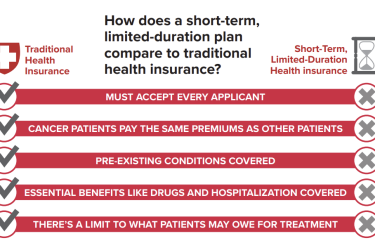
Last year on this blog, I asked a rhetorical question: Is value-based care a fad? I did not expect to get an answer. But in June I hosted a webcast on this topic and learned that value-based care is not a fad and that what health insurers and health care administrators call value-based care rarely delivers any actual value to patients or consumers.
Instead, when health insurers, physicians, and hospital and health system executives use the term “value-based care,” they most often mean value-based payment. For more detail on this distinction in terms, please see a new tip sheet I wrote on this topic.
The webcast is available on-demand to AHCJ members, along with the slides and contact information for the presenters, both of whom are professors at the Dell Medical School at the University of Texas: Elizabeth Teisberg, Ph.D., executive director of the Value Institute for Health and Care; and Scott Wallace, J.D., M.B.A., institute’s managing director.

They explained that in health care world “value is the improvement in the health outcomes that matter most to patients for the cost of achieving those outcomes.” In other words, if care does not improve a patient’s health, then no value is created.
Conversely, value-based payment is a reimbursement model that health insurers, accountable care organizations and other payers use to pay physicians and hospitals. Payment is based on factors the payers define, such as controlling costs from one year to the next or meeting certain quality or process-improvement goals.

Teisberg and Wallace drove home the point that journalists need to ask anyone who uses the term value-based care this question: Who derives value from value-based care? Value, they answered, should accrue to patients.
They made another important point about one of the biggest failings of the U.S. health care system. While there’s plenty of talk about value-based care, care too often fails to improve results for patients.
“The biggest problem in health care is that it doesn’t work well enough,” Teisberg said, noting that compared with results from other industrialized nations, the United States has relatively poor health results.
As an example, Teisberg and Wallace showed how the average results for all hospitals in Germany compare with the results from one of the best German hospitals for men who had prostate cancer surgery. The five-year survival rates for these patients were similar when comparing the average hospital against the best hospital, but the percentage of patients with severe erectile dysfunction and severe incontinence was much lower in the best hospital, they reported.
The message from this statistic is clear: value for these patients would be lower rates of ED and incontinence.







